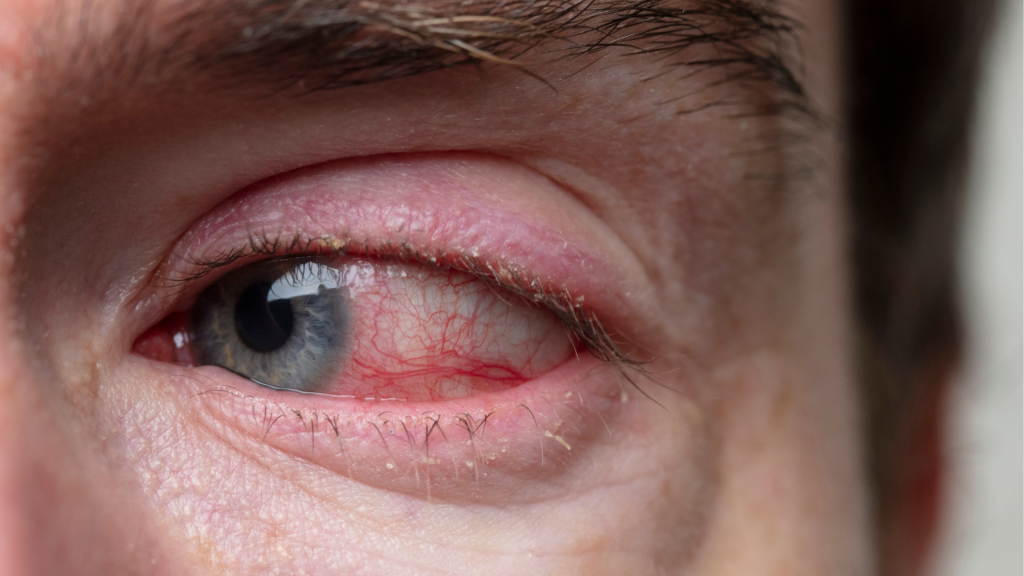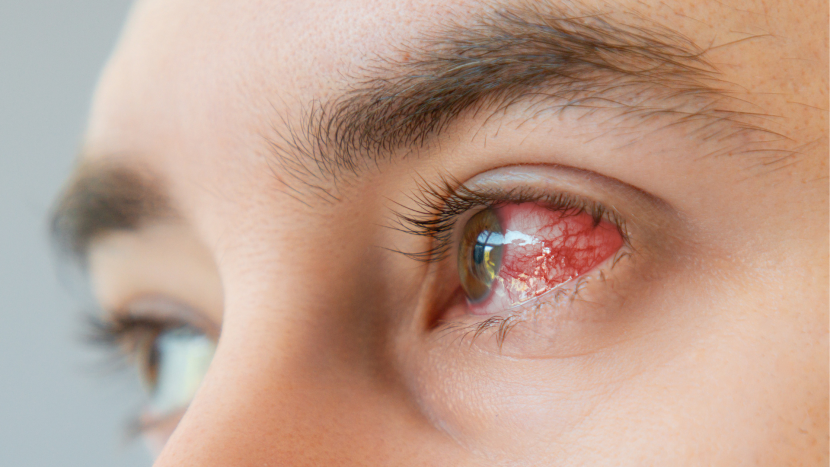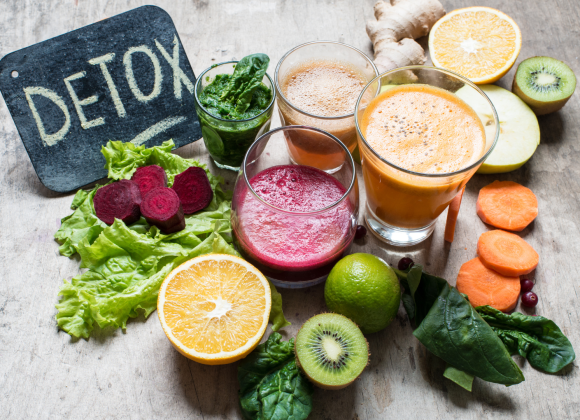The monsoon season brings refreshing rains and cooler weather. And providing relief from the intense summer heat. However, the high humidity and stagnant water also create an ideal breeding ground for bacteria and viruses, increasing the risk of infections—particularly eye-related ones. Eye problems become more common during this time. And if left untreated, they can cause significant discomfort or even long-term damage. To protect your vision and maintain good eye health. And it’s crucial to recognize common monsoon-related eye infections and take preventive measures. By staying informed and following simple precautions, you can enjoy the season while keeping your eyes safe.
Common Monsoon-Related Eye Infections
1. Conjunctivitis (Pink Eye)
Conjunctivitis is an inflammation of the conjunctiva—the thin, protective membrane covering the white part of the eye and inner eyelids. It can result from bacterial or viral infections, as well as allergies. Highly contagious, it spreads easily through contact with infected surfaces or fluids.
2. Stye
A stye is a tender, red lump that forms along the eyelid due to a bacterial infection in an oil gland. Poor hygiene, such as touching the eyes with dirty hands, often triggers it. Symptoms include swelling, pain, and sometimes pus formation.
3. Keratitis
This condition involves corneal inflammation, the clear outer layer of the eye. Bacterial, viral, or fungal infections—often worsened by contaminated water exposure—can lead to severe pain, redness, blurred vision, and even vision loss if untreated.
4. Blepharitis
Blepharitis is eyelid inflammation, usually linked to bacterial growth, dandruff, or allergic reactions. Symptoms include itchy, red eyelids, flaky skin at the lash line, and a gritty sensation in the eyes. Chronic cases may require long-term management
Prevention Tip: Maintain strict hygiene, avoid touching your eyes with unwashed hands, and use clean water to rinse your face. If symptoms persist, consult an eye specialist promptly.
Causes of Eye Infections During Monsoon
1. High Humidity Levels
The monsoon’s moisture-rich air creates an ideal breeding ground for bacteria and viruses. Excess humidity allows these pathogens to thrive, increasing the risk of eye infections.
2. Exposure to Contaminated Water
Rainwater often mixes with sewage, pollutants, and toxins, becoming a carrier for harmful microorganisms. Contact with this water—whether through splashes or unclean hands—can lead to infections.
3. Poor Hygiene Practices
Rubbing eyes with dirty hands or neglecting handwashing after outdoor exposure transfers germs directly to the eyes. This is a major contributor to infections like conjunctivitis and styes.
4. Airborne Allergens
Increased mold spores, pollen, and dust during monsoons can trigger allergic reactions. These irritants often cause redness, itching, and allergic conjunctivitis (“pink eye”).
5. Improper Contact Lens Use
Lenses exposed to humid conditions or handled with wet hands can harbor bacteria. Extended wear or inadequate cleaning raises risks of keratitis and other infections.
6. Sharing Personal Items
Towels, cosmetics, or handkerchiefs shared with others can spread infection-causing microbes. Even minor contact with contaminated items may introduce pathogens to the eyes.
Prevention Matters:
- Wash hands frequently and avoid touching your face.
- Use clean water to rinse eyes if exposed to rain.
- Disinfect contact lenses properly and consider glasses on rainy days.
- Never share eye makeup or personal eye-care items.
Stay away from Static Water
The monsoon season leads to stagnant water accumulation, creating breeding grounds for mosquitoes and bacteria that can trigger eye infections like conjunctivitis. Walking through puddles or contaminated water increases exposure to harmful pathogens.
Protective Measures:
- Avoid direct contact with stagnant water
- Use umbrellas or raincoats to shield your eyes from rain splashes
- Wear protective eyewear in heavily waterlogged areas
- Rinse eyes with clean water if exposed to dirty water

Tips to Avoid Eye Infections During Monsoon
- Wash Hands Frequently – Prevent infections by keeping hands clean before touching your eyes.
- Keep Eyes Dry – Gently pat wet eyes with a clean towel (never shared or reused).
- Use Safe Water – Avoid rainwater on your face; rinse eyes only with filtered/boiled water.
- Wear Protective Eyewear – Sunglasses or goggles shield against rain, pollutants, and splashes.
- Handle Contacts Safely – Clean lenses properly, avoid tap water, and don’t overwear them.
- Don’t Share Personal Items – Towels, makeup, or handkerchiefs can spread infections.
- Limit Outdoor Exposure – Stay indoors during heavy rains to avoid contaminants.
- Use Lubricating Drops – Flush out irritants with preservative-free artificial tears (avoid self-medication).
- Boost Immunity – Stay hydrated and eat vitamin-rich foods (like leafy greens and citrus fruits).
- Consult a Doctor Immediately – If redness, pain, discharge, or blurry vision occurs.
FAQs
Q. 1. Why is eye care especially important during the monsoon season?
Ans: The monsoon season creates a humid environment that promotes the growth of bacteria and viruses, increasing the risk of eye infections like conjunctivitis. Proper eye care helps prevent infections, maintain clear vision, and reduce irritation caused by excessive moisture and allergens in the air.
Q. 2. What are some simple daily habits to protect my eyes during the monsoon?
Ans: Wash your hands frequently, avoid touching your eyes, use clean towels, wear protective eyewear during outdoor activities, and avoid sharing personal items like eye drops or makeup. Keeping your eyes clean and avoiding contact with contaminated water are key preventive steps.




